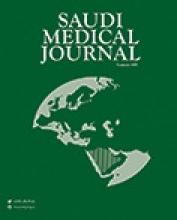Abstract
OBJECTIVE: To localize amylase enzyme immunohistochemically in the pancreatic acinar cells of rats and humans using polyclonal sheep anti-human amylase antibody, and to compare between the intensities of their amylase-immunostaining.
METHODS: Indirect immunofluorescence method was applied on formaldehyde-fixed, and paraffin-embedded pancreatic sections obtained from adult male Wistar rats and autopsied human samples. Primary incubation was performed using sheep anti-amylase antibody followed by secondary incubation with fluorescein isothiocyanate-labeled rabbit anti-sheep IgG serum. Control tests of amylase immunospecificity were also undertaken either by incubation with primary antibodies previously pre-adsorbed with an excess of human pancreatic amylase, or only with secondary antibodies.
RESULTS: The amylase immunofluorescence was positively and homogenously detected in all acinar cells of both rat and human pancreatic stained sections. The immunostaining was clearly demonstrated in the cell apices and peri-nuclear areas, but it was consistently brighter and more intense in the human acinar cells compared with that of the rat pancreas. Control tests of amylase immunofluorescence revealed the specificity of the antibodies applied for amylase localization in rat and human pancreas.
CONCLUSION: Although many previous immunohisto- and cytochemical reports have successfully localized amylase in the pancreas of different mammalian species, but all of them have used locally prepared anti-amylase antibodies. The present report successfully illustrates immuno-localization of amylase in the pancreatic acinar cells of rats and humans using commercial polyclonal sheep anti-human pancreatic amylase antibodies, and also suggests their useful application in the immunochemical studies on various mammalian species. Additionally, the results indicate a structural similarity between the human and rat pancreatic amylases, a concept required further exploration.
- Copyright: © Saudi Medical Journal
This is an open-access article distributed under the terms of the Creative Commons Attribution-Noncommercial-Share Alike 3.0 Unported, which permits unrestricted use, distribution, and reproduction in any medium, provided the original work is properly cited.






